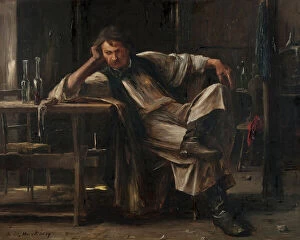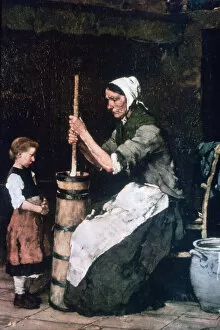Mihaly De Munkacsy Collection
Mihaly Munkacsy, a renowned Hungarian artist of the 19th century, left an indelible mark on the art world with his diverse and captivating works
All Professionally Made to Order for Quick Shipping
Mihaly Munkacsy, a renowned Hungarian artist of the 19th century, left an indelible mark on the art world with his diverse and captivating works. In "The Music Room" (1878), he skillfully captures the enchanting atmosphere of a room filled with melodies and harmonies. The painting exudes a sense of serenity and tranquility that transports viewers to another realm. In "The Last Days of a Condemned Prisoner" (1870), Munkacsy collaborates with Jonnard to depict the anguish and despair experienced by those facing their imminent demise. The emotional intensity conveyed in this piece is palpable, leaving spectators contemplating the fragility of life itself. One cannot overlook Munkacsy's striking portrait of Franz Liszt (1886). Through meticulous brushstrokes, he immortalizes the legendary composer's passion for music, capturing his essence in every stroke. This masterpiece serves as a testament to both artists' genius. Another notable work by Munkacsy is "Christ before Pilate" (1881), which portrays one of Christianity's most significant moments. With remarkable attention to detail, he depicts Christ standing before Pontius Pilate, evoking profound emotions within viewers as they witness this pivotal event unfold. Munkacsy also showcases his versatility through pieces such as "Great Flower Still Life" (1881). Here, vibrant blooms burst forth from the canvas in an explosion of color and beauty—a testament to nature's awe-inspiring wonders. In "Strike" (1895), Munkacsy delves into social commentary by depicting workers protesting for their rights amidst harsh working conditions. This thought-provoking piece sheds light on societal issues prevalent during that era while highlighting Munkacsy's ability to capture raw human emotion. "The Condemned Cell" (c1864-1900) offers a haunting glimpse into confinement and despair.














